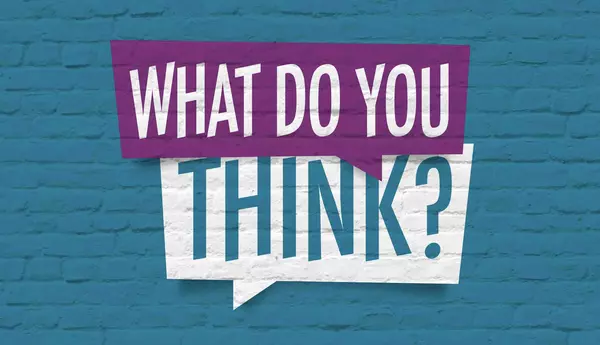Poll vs. Survey - What are the Differences?
When conducting market research learn how these terms differ before deciding on your strategy
You might also like…
Why Qualitative Research is Essential in Market Research (and How EthOS Elevates It)
Discover why qualitative research is such an important part of market research and how OvationMR's tool EthOS can help. By: Anne Collins Date: March 25, 2025 Inside this Article... Introduction Why Small Sample Sizes Still Deliver...
Why AI Tools Built by Researchers Make a Difference
Learn more about AI-powered market research tools and why tools build by researchers for researchers are leading the charge. By: Erik Larson Date: March 4, 2025 Inside this Article... Introduction Why Outsiders Miss the Mark Why...
Customer Survey Best Practices: Unlocking Insights Through Your Customer List
Learn how to leverage customer lists for market research. Explore best practices, address low response rates, and drive actionable insights. Date: February 11, 2025 Inside this Article... Introduction Conducting Surveys with Customer...
Often used interchangeably, the difference between the terms survey vs poll is a bit opaque. However, a little uncertainty is understandable, considering that there is a lot of overlap between the two words. After all, they both refer to research methods where you ask participants for their opinion or other information.
However, despite the similarities, it’s advisable for anyone looking to conduct market research to familiarize themselves with how these terms differ before deciding on their strategy.

Defining Polls and Surveys
While there are some exceptions, the difference between a survey and a poll generally comes down to the length of questions asked and the methodology used in selecting the respondents and analyzing the data.
Many people often use the word survey to refer to a questionnaire, but it also refers to the entire process of conducting market research by gathering and analyzing data.
Poll, however, has a much narrower and more specific definition. It simply means a study in which you ask people their opinions. To be clear, a poll is a type of survey, but not all surveys are polls.
Please note that if you use software that offers surveys and polls, there may be specific technical differences that we did not address in this article. Therefore, you should consult your software’s documentation.
Market Research Using Polls
Most closely associated with politics, a poll can be an effective tool for quickly learning an audience’s feelings on just about any issue. Usually, polling only consists of one or two questions that you ask of a wide audience. As a result, respondents to polls are generally not as carefully selected as survey participants.
Polls are a great source of instant, general information. For example, asking visitors to your website to rate their shopping experience can help you quickly highlight issues that need to be fixed or give you peace of mind that your operation is running smoothly.
However, if what you are after is statistically significant data, you should probably conduct a more scientific survey instead.
Pros and Cons when using Polls:
Market Research Using Surveys
A market research survey is probably your best bet if your goal is to get the most detailed and accurate data possible. A properly conducted survey can provide insights that help your company make smart decisions ranging from which products to launch to which messages will be the most effective in your marketing.
Unlike a simple opinion poll, a market research survey can cover a lot more ground, as respondents are generally asked to answer more than just a few questions. Additionally, a well-run market research survey selects participants based on the target audience. Thus, it nearly always provides a more representative population sampling than a poll where anyone is typically invited to respond.
However, surveys come with downsides as well. The first apparent negative with conducting a detailed survey instead of a quick opinion poll is that it is likely to cost more. Budget pressures arise because it takes a lot more time and effort to choose participants that accurately represent the entire audience you are trying to understand better.
Pros and Cons when using Surveys:
Polling – Not Just for Politicians
While political polling generates most of the headlines, polls of all kinds can be helpful. Thanks to the broad nature of polling, much of the information generated has general application across several different business types. For instance, an entrepreneur opening an ice cream parlor would do well to familiarize themselves with this YouGov quick poll where they asked respondents to name their favorite flavor (chocolate was the #1 pick).
As companies become more involved in social issues, public opinion polling data becomes even more helpful. Not only can companies use this information to decide which causes to support publicly, monitoring trends in >social and policy issues can also be beneficial when crafting messages for use in marketing or PR.

Polling on the Internet
The internet has been a total game-changer when it comes to the ease of conducting a poll. Previously, pollsters have had to rely solely on more expensive and invasive methods of contacting respondents, such as telephone or postal mail.
At this stage, a wide variety of online services make it easier to gather opinions than ever before. For example, a simple poll can be created on a company’s website or social media profiles, allowing visitors to share their opinion with just a few clicks of a mouse.
While internet polling certainly has its place, the speed and accessibility of online-only polling also come with some negatives. Most notably, when conducting polls entirely online, survey authors can do little to ensure that each person responding is who they say they are.
Also, when conducting an online poll, it’s essential to look out for “Brigading,” the practice of various online communities promoting your poll in pursuit of a specific result. Having a large influx of respondents motivated to push the result of your poll in a specific way can skew your data quite a bit.
Finally, as a word of caution, it’s best never to leave important decisions to internet polls alone as that often invites a brigade of trolls to pick responses based on what is funny rather than what they really think. Britain’s Natural Environment Research Council learned this lesson the hard way in 2016 when they trusted the internet to name their $287 million polar research vessel. Much to the delight of internet pranksters, The R.R.S. Boaty McBoatface set sail for the first time in 2017.
The Science of Surveys
When conducting a market research survey, it’s important to be as thoughtful as possible from the start. By planning your survey correctly, you can avoid making compromises down the road and ensure that you get the best data possible. Here are the basic steps to create and execute a survey that you can trust to yield valid results.
Creating the Questionnaire
Crafting the questions that will be asked of your respondents is one of the most important elements of ensuring that your survey remains fair and unbiased. Survey questions should be phrased in clear, specific language that is unlikely to be misinterpreted or have different meanings to different respondents.
Bad Survey Question: “Do you drink lots of water every day?”
Good Survey Question: “On average, how many 12oz glasses of water do you drink each day?”
Choosing Who to Survey
By choosing the right people to respond to your survey, you can save yourself many headaches down the road. You want your respondents to be an accurate representation of the target audience you are trying to study. For instance, if the audience for your product comprises 60% women, an audience with a majority of men will not be a good representative sample.
Collecting Data
This part is where the rubber meets the road, and you collect the data from your respondents. Again, it’s important to ensure the data collection process is done systematically to avoid any potential bias. For instance, some people may answer questions differently when asked online as opposed to face-to-face.
Like choosing your sample audience, it’s usually impossible to control every factor that could cause your data to be skewed when collecting data. However, careful planning and execution and leveraging a market research panel can mitigate much of this risk.
Analyzing Your Data
At this point, you should have all of the information needed to have excellent insight into how your target audience feels about the topics you’ve been asking them about. However, before turning it into actionable information, you must first address any potential biases or shortcomings in earlier steps. You do this through a process known as “weighting,” in which responses from under-sampled segments of your audience are counted more.
Making Better Business Decisions Through Research
Whether you decide to use a simple opinion poll or a more robust, scientific market research study, one thing is clear. Listening to your target audience is an important part of making the correct decisions for your business. (Pitch for Ovation Here? Maybe Earlier as Well)
Follow
OvationMR

Need help with new insights?
We are ready to offer you:


